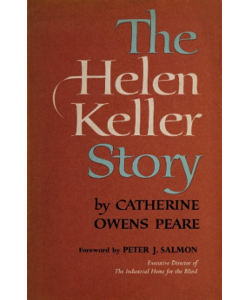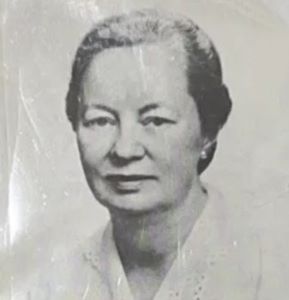The Helen Keller Story

Author:
Catherine Owens Peare
Drawings by Jeanyee Wong of the One-hand Alphabet Used by the Deaf-Blind
Publication:
1959 by Thomas Y. Crowell Company
Genre:
Biography, Non-fiction
Pages:
184
Current state:
This book has been evaluated and information added. It has been read but content considerations may not be complete.
Book Guide
Search for this book used on:
This is the story of a remarkable woman told with insight and warmth. But it is more than a biography. The author unfolds in Helen Keller's life story the great changes in social and medical attitudes that took place during Miss Keller's lifetime toward the disabled and handicapped, changes that have enabled them to cope with life.
Even as a "violent little tyrant," Helen Keller displayed an unusual stubbornness which, though negative then, became a positive and fortunate force in her rich life. And it was Anne Sullivan Macy, her beloved "Teacher," who channeled this trait so that it became one which enhanced Helen's insatiable curiosity and her intellectual growth.
The moment Helen understood her first word from Teacher, she began her endless search for knowledge. She learned quickly—sometimes too quickly for those around her. But this ability, plus her determination, resulted in her being the first deaf-blind woman to graduate form Radcliffe College.
Life was just beginning for Helen Keller after her graduation. There was so much to learn, so much to "see", and so much to do! She was learning to speak, and she lectured about the problems which faced the deaf-blind. She wrote articles about these and other handicapped people. She saw the fruits of her labors when legislatures began to establish schools for the blind and the deaf.
On the lecture platform Helen Keller was a miracle people could see and touch. She was besieged with lecture dates. She traveled throughout this country and abroad—always with the interests of the deaf-blind uppermost in her heart and mind.
Anne Sullivan Macy and, later, Polly Thompson, were constant sources of inspiration and help. There were often others as well: Alexander Graham Bell, William Dean Howells, Mark Twain, and Franklin D. Roosevelt.
The author gives the reader very practical and specific advice about how to help the blind and the deaf. And this inspiring story concludes with a clear explanation of the intricacies of the finger alphabet.
A reporter once asked Helen Keller if she really achieved anything in her life. Her answer is the keynote of this book:
"I believe that all through these dark and silent years God has been using my life for a purpose I do not know, but one day I shall understand, and then I will be satisfied."
From the dust jacket
To view an example page please sign in.
Content Guide
Please sign in to access all of the topics associated with this book and view other books with the same topics.
Please sign in to access the locations this book takes place in and view other books in the same location.
Please sign in to access the time periods this book takes place in and view other books in the same time period.
For information about the lead characters please sign in.
Find This Book
Search for this book used on:


